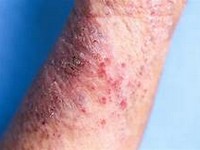
CHOLESTEROL, HIGH
FOODS THAT HARM
FOODS THAT HEAL
FOODS TO LIMIT
WHO’S AFFECTED
Cholesterol is the fatty, waxy compound that the body uses to produce hormones, vitamin D, and fat-digesting bile acids
A little goes a long way; what’s left over ends up in the arteries
There, it can form deposits called plaque on artery walls, which narrows and hardens arteries and reduces blood flow
Blockage to coronary arteries can cause chest pain and heart attack; carotid artery blockage may cause stroke, and when leg arteries are blocked, it may hurt to walk
The proteins that carry cholesterol throughout your bloodstream are known as lipoprotein, and come in three types:
The “bad” cholesterol, LDL builds up on artery walls and narrows them.
This contains triglycerides, a blood fat
VLDL enlarges LDL cholesterol and increases its potential to narrow blood vessels.
A “good” form of cholesterol, HDL collects excess cholesterol and moves it to your liver.
Nutrition Connection
Diet plays a key role in raising or lowering cholesterol levelsIn particular, eating high amounts of saturated fats—found in fatty cuts of meat, high-fat cheeses, whole milk and cream, butter, ice cream, and palm and coconut oils—can raise cholesterol levels
And then there are the lab-produced trans fats
These insidious fats, which can spike LDL levels, form through a chemical process (hydrogenation) that increases the shelf life of oils
Some margarines, store-bought baked goods, french fries, and other fast foods can contain trans fats
Here’s how to eat smarter to avoid high cholesterol: Choose lean meats
Avoid cuts of meat that are richly marbled with fat; trim all visible fat before cooking
Also, remove poultry skin before (or at least after) cooking
Seek out plant sterols
These substances help block the absorption of cholesterol
They are added to many food products, including spreads, orange juice, and yogurt drinks
Aim to consume 2 g a day (the amount in two 8-oz (227 g) servings of sterol-fortified orange juice
Doing so can lower LDL levels by a healthy 10%
Skim the dairy
Select 1% or fat-free milk instead of whole or 2% milk
Most cheeses now have low-fat versions
Get friendly with fiber
Soluble fiber reduces LDL and reduces absorption of cholesterol into the bloodstream
Good sources include oats, kidney beans, apples, pears, and prunes
Eating 5 to 10 g of soluble fiber a day can lower total and LDL cholesterol
Cook with EVOO
Extra virgin olive is a “good fat” because it contains antioxidants that help lower your LDL and preserve healthy HDL levels
Add omega-3s
These healthy fatty acids come from fish, some plants, and nuts and can reduce triglyceride levels (another anti-healthy heart blood fat)
A low-dose omega-3 supplement containing 400 mg EPA plus DHA reduced heart attacks in a 2012 study
Moderate your drinking
One (for women) or two (for men) drinks a day can raise HDL levels
But more is definitely not better: Heavy drinkers up their risks for high blood pressure, heart failure, and stroke
Beyond the Diet
You can’t control the genetic factors that lead to high cholesterolHowever, there’s good news: You can control many lifestyle factors that contribute to high numbers and raise the risk for heart disease
Shed a few
Pounds, that is
While your goal should be to get to your healthiest weight, your cholesterol will drop as soon as you lose that first 5 or 10 pounds
Get physical
Even 10-minute intervals of exercise a few times a day can lower cholesterol and raise your HDL levels
Toss the butts
Quitting smoking can raise your HDL levels and lower your blood pressure
Within just one year, quitters can halve their heart attack risk
Importance of well balance diet




